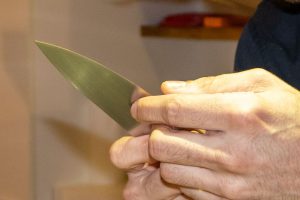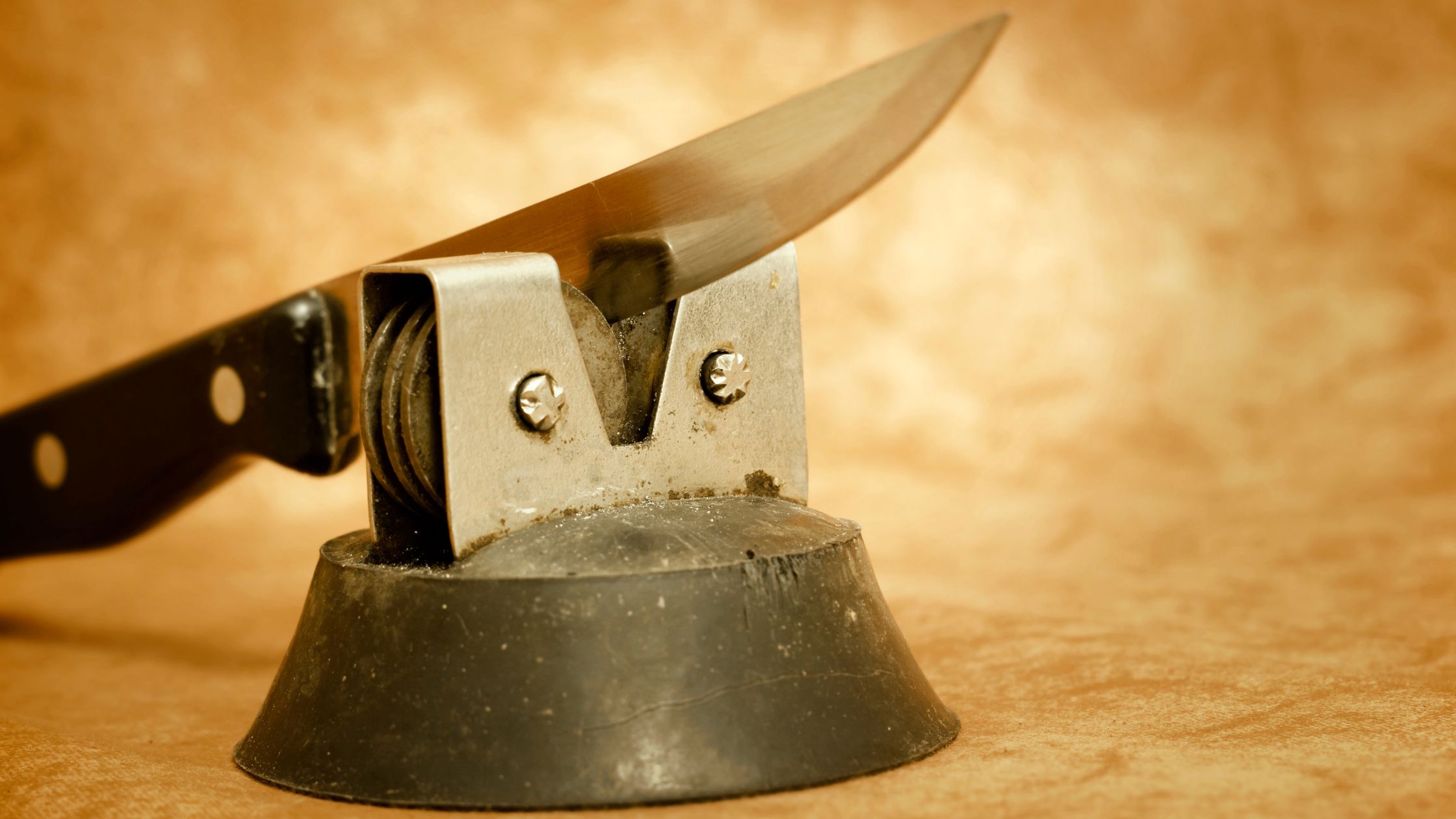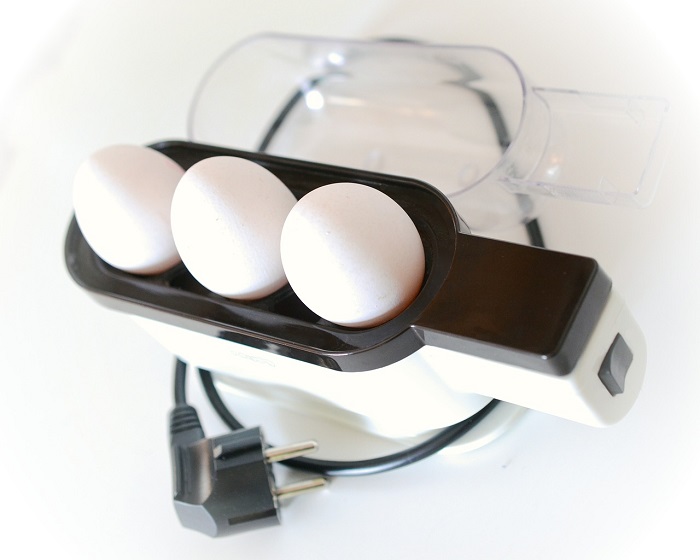How to sharpen kitchen knives is essential to ensure their longevity and performance. The difference between honing and sharpening is that honing smooths out the blade surface while sharpening creates a new edge by removing metal.
A sharp knife is one of the most critical tools in a professional kitchen, and it can make or break your culinary career. So if you’re serious about your craft, learning how to maintain your knives properly is something you want to get done. To do so, you need to know how to sharpen them properly.
Why it’s crucial to sharpen kitchen knives?

Why it’s crucial to sharpen kitchen knives? Well, first of all, sharpening
your knives regularly helps them last longer. It also makes the job of cutting and chopping much easier. And because your knives will be doing a lot of work, you want to ensure they stay sharp.
So whether you’re new to sharpening or have been doing it all along, these are some essential tips and techniques you should know.
What Is The Difference Between Honing and Sharpening?

Honing and sharpening are both processes used to maintain a knife’s edge, but they are different in their methods and purposes.
Sharpening is creating a new edge on a knife by removing metal from the blade to create a sharper edge. To sharpen a knife, you must remove metal from the blade’s edge to create a new edge. When sharpening, you are removing metal from the edge of the blade. Sharpening the blade’s edge allows for better control when using the knife and makes it easier to use. This makes the blade more versatile and safer for cutting.
Honing, however, is a way to smooth out the blade’s surface, so the blade does not get dull. The purpose of honing is to give the blade an even surface. You are smoothing the blade’s surface with a tool or stone when honing. A honing stone is used to smooth the blade without removing material from the edge.
It is essential to understand the difference between sharpening and honing. Honing is used when the blade is getting dull. Sharpening is used when the blade needs a new edge.
How To Know If Your Kitchen Knives Become dull

Have you ever found that your kitchen knives are losing their edge over time? And even though you are careful when cleaning them, you end up with a knife with a dull blade? There are several ways to check if your kitchen knives become dull, and we have a few tips on keeping them sharp.
1. The cutting edge is not straight: When you look at the cutting edge of your knife, it should appear straight and cut smoothly. If it appears crooked, this means that it has gotten dull. The Steel needs to be sharpened.
2. Visual Inspection: another way to test if your knives become dull is by visually inspecting them. Hold the handle at the top where your thumb would usually be, and look for grooves or scratches in the Steel. The Steel needs to be sharpened if there are any marks on the blade.
3. Performance Test: another way to test for a dull knife is to perform a test with meat. Cut a piece of beef, pork, chicken, or fish, and make sure the knife slices through without resistance. If it becomes difficult to slice, the knife must be sharpened.
4. Touch Test: another way to test for dull knives is to touch the blade. If the blade feels rough to the touch, the knife should be sharpened
5. Cutting Test: one of the easiest ways to test your knives is by cutting vegetables and fruit. Cut an apple, carrot, or broccoli and see if they can go through your knife quickly. If you need help, you may need to sharpen them.
6. Difficulty in slicing: A sharp knife should be able to slice easily, but if you find it difficult to slice through the fruits and vegetables. Then it may need to be sharpened.
It’s crucial to sharpen your knives regularly to maintain their sharpness and ensure safe and effective slicing.
Generally, if you notice any of the above signs, it’s a good idea to sharpen your knife.
How to sharpen kitchen Knives?
There are several ways to sharpen a kitchen knife, including honing Steel, a sharpening stone, or an electric knife sharpener.
1. Honing Steel.
To use a honing steel, hold the Steel vertically with one hand and the knife with the other hand. Run the blade over the Steel by moving the knife up and down across the Steel. This will give your knife a final honing.
2. Sharpening Stone:
To use a sharpening stone, place it on a flat surface, then place the back of the blade against the stone. Rotate the blade as you pull it toward you until the blade is sharp enough for you. Ensure the stone is at the right angle to the blade for proper sharpening.
3. Electric Knife Sharpener:
To use an electric knife sharpener, place the knife in the sharpener and turn the power switch on. Turn the blade so that it runs over the honing plate, which will bring the blade’s edge up to a keen edge. If necessary, continue turning the blade to sharpen the entire blade.
It’s important to note that honing Steel is for maintaining a sharp edge and not for sharpening a dull knife. Sharpening stones or electric sharpeners are more suitable for sharpening a dull knife.
Conclusion
Sharpening kitchen knives is vital for maintaining their edge, making cutting and chopping easier, and prolonging their lifespan. Sharpening and honing are two different processes used to maintain a knife’s edge. Sharpening involves creating a new edge by removing metal from the blade while honing is smoothing out the blade’s surface without removing material. There are several ways to check if your kitchen knives are dull, such as checking for a straight cutting edge, visual inspection, performance test, touch test, cutting test, and difficulty slicing. It’s crucial to sharpen your knives regularly to ensure safe and effective slicing.
Read Also: Best Serrated Knife
Read Also: The Best Sushi Knife
Read Also:







